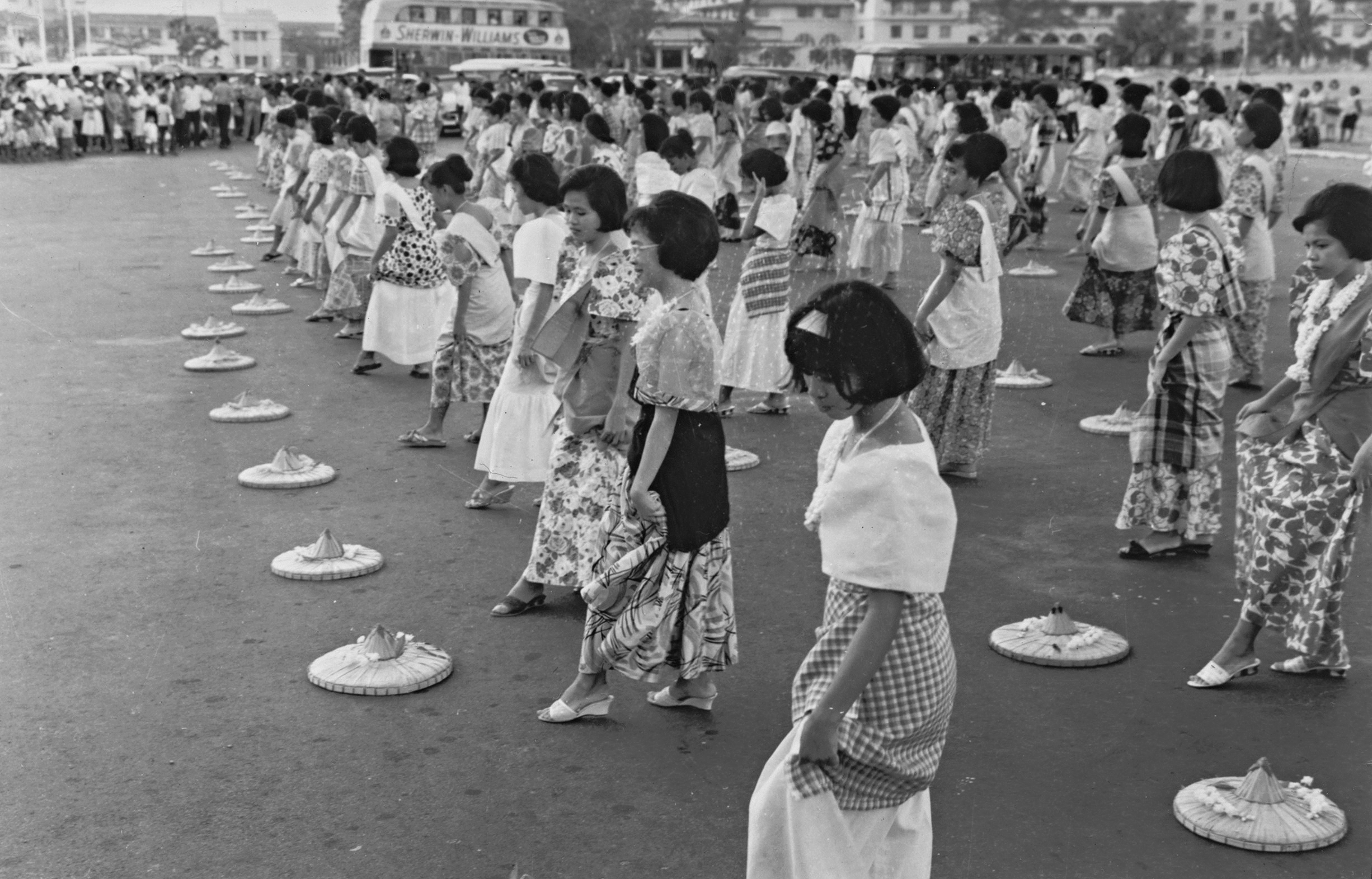
Celebrating seven decades of
REMEMBERING
Philippine Baranggay Folk Dance Troupe (PB)
From the early days at the Philippine Normal College, Manila, where it all began as a mixed dance class, 1946
How it all began
Originally 'baranggay' meant boats used by the Malays arriving on the shores of the Philippines during the pre-Spanish times. Later, the name came to connote the unit of government known as the 'Pueblo'. The word 'baranggay', with its connotation of friendly association and harmonious living, was adopted when naming the troupe to reflect its objectives of developing the physical, mental, and social life of the individual through the cooperative effort of its members.
For over seventy years, the Philippine Baranggay Folk Dance Troupe has performed globally, showcasing the rich culture of the Philippines. Our vibrant performances blend traditional motifs with innovative choreography, inviting audiences into a realm where history and contemporary expression meet. Through rhythmic beats, colorful costumes, and spirited dances, we bridge cultural divides and celebrate our diverse heritage. Our journey of resilience and creativity continues, exploring new horizons while honoring the past.
The Philippine Baranggay Folk Dance Troupe remains committed to its mission of preserving and showcasing the vibrant tapestry of Philippine culture. With each performance, the troupe delves deep into the rich heritage of the islands, exploring the unique customs, traditions, and diverse religions that characterize the Filipino experience.
By presenting authentic folk dances and music, the troupe captures the gaiety and warmth of the Filipino spirit, transforming the stage into a lively reflection of the people’s history and values. The performances are crafted to evoke the charm of community gatherings, resonating with audiences around the globe.
Through research and innovation PB celebrates the stories of the Philippines, creating a captivating panorama that invites the world to discover the Philippines' cultural riches. Whether through a joyous dance or a heartfelt song, each performance serves as a testament to the enduring legacy of Filipino artistry and hospitality.
The troupe has received many citations and awards both nationally and internationally. The most prestigious of these is the Philippine Presidential Medal of Merit Award Patnubay ng Kalinangan sa Sayaw (1971)—a truly distinguished award of recognition for the important contribution the troupe is making in preserving Philippine cultural heritage
Through the pioneering leadership of the founding Artistic Director—the late Dr. Paz Cielo A. Angeles-Belmonte, awardee of the Gawad CCP Para sa Sining at Sayaw (1990), Philippine Centennial Awards (1999) and the Gintong BAI Awards (2005)—the PB continues to excel as one of the leading three dance companies in the Philippines. With the PB playing an important role in folk dance education, with most of its members being teachers and educators, the group has had a significant impact on the development of the Filipino youth’s values in appreciation of their own culture, arts and traditions, particularly folk/traditional dance and music.
The PB have traveled to Russia's Red Square, climbed the Great Wall of China, visited the land down under in Australia, crossed the Berlin Wall and basked in the shadows of London's Big Ben and Paris' Eiffel Tower while criss-crossing all of Europe, danced on the stages of Las Vegas and Broadway and performed alongside Mickey Mouse in Disneyland.
Inspired and guided by the ‘baranggay spirit’ and discipline, members and alumni have organized folk dance groups in their respective schools/universities and communities worldwide, with the continued support of the mother company, previously under the leadership of the former Administrative & Creative Director, the late Mr. Eugenio C. Ticzon (aka Eugene as he is remembered by most), and today by PB’s new Administrative & Creative Director, Ronnie del Barrio (aka Kuya Ronnie), PB has expanded a thousand folds in its 78 years of existence, making it the longest-running Philippine folk dance group of its kind—a legacy the PB’s Board of Trustees and Creative Team continue to carry forward in its mission of educating the Filipino youth towards appreciation, preservation, and promotion of their Philippine cultural heritage.
During the Baranggay dancers Batch 62's Oathtaking with Dr. Francesca Reyes-Aquino (National Artist for Dance) at the Philippine Normal College
Successful show in New Zealand, Philippine Embassy Gala Show June 2014




